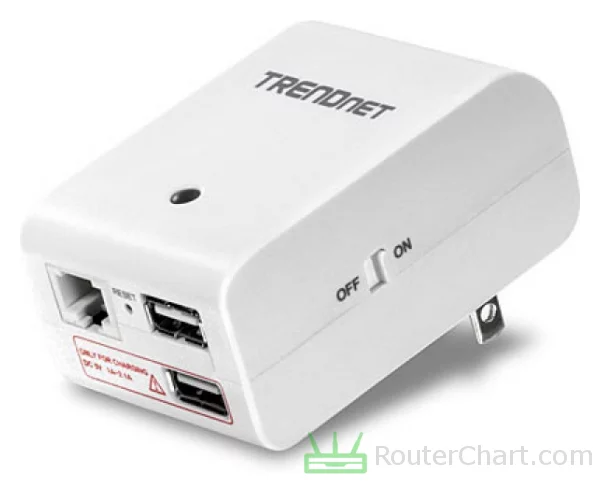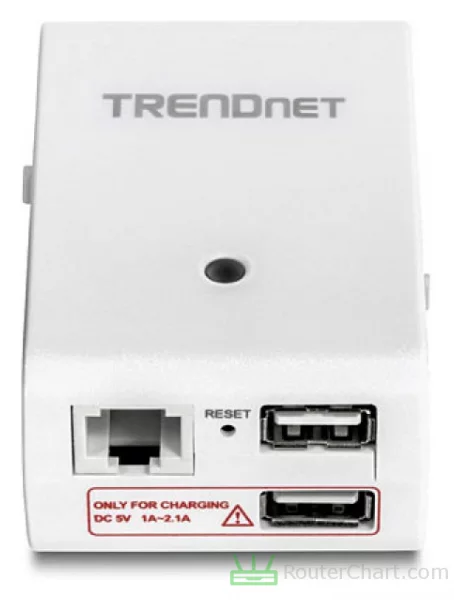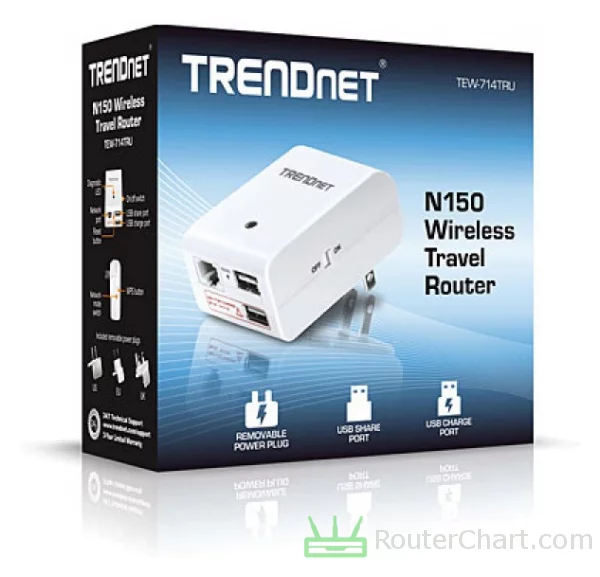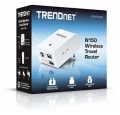TRENDnet N150 TEW-714TRU WiFi router: Pros and Cons
The TRENDnet N150 TEW-714TRU (TEW-714TRU) router released in 2013. It is powered by Ralink RT5350 chipset, 32 MB of RAM and 8 MB of flash. The N150 router is compatible with IEEE 802.11b/g/n standards, and the maximum speed that you can get with N150 TEW-714TRU is 150 Mbps. The router has 1 x 10/100 Mbps WAN and no LAN ports.
Table of Contents
Our personal experiences and opinions form the basis of this article. We aimed to share insights on a topic, and we hoped others would find it useful and inspirational. The specs below rely on official manufacturer data, but we also consider user reviews. If you noticed any mistakes or missing details about the TRENDnet N150 TEW-714TRU, please let us know. Furthermore, we strive to deliver a thorough and precise overview.

The N150 TEW-714TRU is an affordable and reliable router designed for basic networking needs. You can connect supported USB devices to the router. TRENDnet has established a solid reputation as a reliable and reputable networking brand.
TRENDnet N150 TEW-714TRU specifications
| Brand | TRENDnet |
|---|---|
| Name | N150 TEW-714TRU |
| Type | TEW-714TRU |
| Rating | |
| Launch | 2013 |
Body
| Dimensions | 81 x 50 x 39 mm |
|---|---|
| Weight | 120 g |
The dimensions and design of a router can impact its cooling capabilities. Routers with larger dimensions may have more space for internal cooling mechanisms. The weight of a router can matter in some situations. But, it is usually not as crucial as other factors. These factors include features and compatibility.

System
| Chipset | Ralink RT5350 |
|---|---|
| RAM | 32 MB |
| Flash | 8 MB |
| OS | TRENDnet |
| Power supply | 0.5 A |
The TRENDnet N150 TEW-714TRU router has a Ralink RT5350 processor. The amount of RAM in a router can affect its performance. It also affects its capacity to handle concurrent operations and traffic. The 8 MB flash memory in the router serves as the storage medium for the router's firmware. TRENDnet often releases firmware updates. They improve the router's features, security, and bugs. They also add new features.

Network
| Protocols | IPv4 IPv6 |
|---|---|
| LAN ports | no |
| WAN ports | 1 x 10/100 Mbps |
| Mobile network | no |
| VPN support | no |
Like many modern routers, the N150 TEW-714TRU supports many network standards too. The IPv4 is the fourth iteration of the Internet Protocol (IP). It is the most widely used version of IP on the internet today. The latest firmware supports IPv6. It provides a system to identify and locate computers on networks. The WAN port on the N150 TEW-714TRU router is a Fast Ethernet port, not a Gigabit Ethernet.

Wireless
| Antennas | 1 x 2 dBi internal |
|---|---|
| 2.4 GHz | yes |
| 5 GHz | no |
| 60 GHz | no |
| Standards | IEEE 802.11b/g/n |
| Class | N150 |
| Speed | 150 Mbps |
| Transmit power | 20 dBm |
| Security | WEP WPA WPA2 WPS |
| Guest network | no |
This router has 1 x 2 dBi, internal antennas. Antennas are key parts of wireless routers. They send and receive radio signals to make wireless connections. The N150 TEW-714TRU is compatible with 2.4 GHz Wi-Fi networks. This is a Wi-Fi 4 (802.11n) router. Wi-Fi 4 improved the range and coverage compared to previous Wi-Fi standards.. Real-world N150 TEW-714TRU router speeds are lower than its theoretical maximum speed.
WEP was the first Wi-Fi security protocol. But it is now seen as weak and easy to hack. The introduction of WPA2 (Wi-Fi Protected Access 2) improved upon WEP. It provides stronger security. WPS (Wi-Fi Protected Setup) provides an easy method. It connects devices to a Wi-Fi network.
Connectivity
| USB ports | 1 x USB 2.0 1 x USB 1.1 |
|---|---|
| Print server | yes |
| File server | yes |
The USB 2 port has a maximum theoretical data transfer rate of 480 megabits per second (Mbps). USB print servers let you connect a USB printer to your network. This makes it accessible to many devices. You can connect external storage devices such as USB flash drives or USB hard drives to your router.
Administration
| Default IP | 192.168.10.1 |
|---|---|
| Default username | admin |
| Default password | [on the label] |
If you can't log in to your TRENDnet router's setup panel, try resetting it. A reset can help you troubleshoot. It is highly recommended to change the default password of your N150 TEW-714TRU router. Do this after the initial setup.
Pros and Cons
Every router, including this TRENDnet one, has its good sides and not-so-good sides. Let's take a closer look at both to get a full understanding of what this router can do. We'll talk about what it does well and also where it could use some improvements. Just remember, this is just what I think, and you might see things differently.
Pros
- lightweight
- IPv6 capable
- WPS friendly
- USB 2 compatible
- printserver functionality
- fileserver operation
Cons
- insufficient flash
- lack of Gigabit LAN
- Non-gigabit WAN port
- missing Wi-Fi 6 support
- lacks Wi-Fi 5 compatibility
- reduced Wi-Fi bandwidth
- incompatible with WPA3
TRENDnet N150 TEW-714TRU photos





If there’s information about the TRENDnet N150 TEW-714TRU that you would like to see on this site, then write to us.

